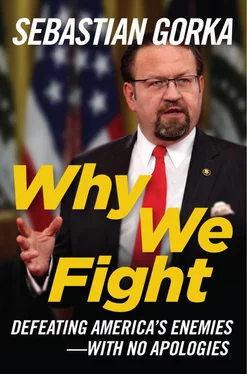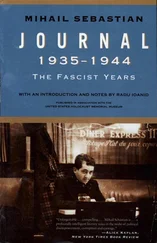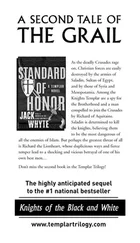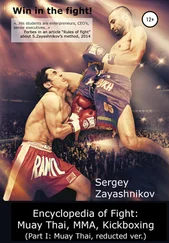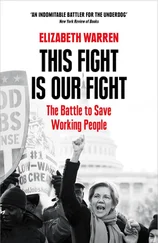Allah is our goal.
The Prophet is our leader.
The Quran is our constitution.
Jihad is our way.
Death in the service of Allah is the loftiest of our wishes. [2] For full details see Thomas Joscelyn: The Muslim Brotherhood: Understanding it Roots and Impact , Foundation for Defense of Democracies, undated.
With the persistent waning of Western colonial control in the Middle East and North Africa in the years after World War I and World War II, the Muslim Brotherhood grew in influence across the region, often in ways that threatened the newly independent governments that had been established after the withdrawal of the Western powers. As a result, the MB was frequently suppressed or outlawed and its leaders imprisoned or executed by the new post-colonial governments of the Arab and Muslim world.
Second in importance only to al-Banna himself is the Muslim Brotherhood strategist and author Sayyid Qutb.
A minor official in the Egyptian Ministry of Education in the 1950s, he came to the United States on an exchange program to study our school system. After spending two years in the US, he concluded that America represents a godless and materialist civilization antithetical to all that is good in Islam and that it must be destroyed.
Returning to Cairo, he decided to provide the answer to how this destruction must be wrought and why. Chief amongst the works he wrote which to this very day shapes and influences the Jihadist Movement around the world is the slim text Milestones . [3] The title is sometimes translated as Signposts Along the Way . www.kalamullah.com/Books/Milestones%20Special%20Edition.pdf .
Key to Qutb’s argument is the belief that Islam has lost its way and that only war can purify the Muslim community and win back greatness for Islam and glory for Allah.
According to the author, the world is once again in a state of pagan ignorance of the one true god, a state that the Koran refers to a jahalliyyah . In fact, the situation is so dire that Qutb is adamant that no one state existing today is truly Islamic. They have all been subverted by the materialism endemic in their societies and the invidious influence of the un-Islamic values of the West.
Additionally, Qutb saw democracy itself as a great threat to the sovereignty of Islam. In a democracy men make laws over other men and that is the same as dictatorship, according to Qutb. What is more, Islam is quite explicit in his reading, in that there can only ever be one legislator: Allah. As a result of the dictatorial nature of democracy and the fact that democratic systems by definition abrogate the authority of the creator, Qutb decreed that all democracies must be destroyed. [4] See Albert J. Bergesen, ed., The Sayyid Qutb Reader (New York: Routledge, 2008).
Together, the ideas of al-Banna and Qutb and key regional events in the first half of the twentieth century laid the the foundation for a reconceptualization of jihad for the modern era. This reconceptualization would be operationalized by events in 1979 that would see the creation of an international Jihadist Movement and the conditions for the eventual establishment of global terrorist groups such as al-Qaeda.
The year 1979 marked a turn of century in the Arab/Islamic world given their use of the lunar-based hijra calendar. 1979 in the Middle East and for Muslims everywhere represented the move from the year 1399 hijra to the year 1400 hijra. As with most civilizations, the advent of a new century was met with great expectation, with the belief in the likelihood of significant events associated with the new year 1400. Indeed, the year would see three very significant occurrences.
The first happened in the Shia world and was the Iranian Revolution. The importance of the fall of the Shah’s regime’s and its replacement by the Ayatollah and theocratic Supreme Council cannot be overestimated and is not limited to the Persian community or Shia world.
With its core message of a revolution meant to utterly reject the Western model of governance and its separation of “church and state,” the events in Tehran in 1979 still stand as a clarion call to all who wish to see Islamic theocracy re-established and who believe that democracy is haram , or forbidden, and that a Muslim may only live in an Islamic state and under (Islamic) sharia law.
The fact that this Shia-led theocratic and revolutionary state still challenges the West today acts as a catalyst and source of motivation for Sunni fundamentalists as well, such as those found in al-Qaeda. Both Sunni and Shia extremists agree on the need for theocracy. Where they differ is on the question of who should be in control and which version of the religion will inform the theocracy, Shiism or Sunni Islam.
The second event of the “new” century occurred on the very first day of the new Islamic year, Murrham 01 1400, or November 20, 1979. On that day, several thousand jihadist terrorists armed with automatic weapons laid siege to, and captured, the holiest site in Islam, the Grand Mosque of Mecca. This event, which shocked not only the Kingdom of Saudi Arabia but also the broader Islamic world, would have ramifications for international, religiously-informed terrorism that are still felt today.
The jihadists had come to the conclusion that the Muslim world was so corrupted by lack of fealty to Allah and the influence of heretical Western values that it could only be cleansed and returned to greatness by a purifying Holy War, or jihad. First among the target of the terrorists was the government of Saudi Arabia itself and the royal House of Saud which was deemed to be a puppet regime of the West and in a state of apostasy. [5] Yaroslav Trofimov: The Siege of Mecca: The 1979 Uprising at Islam’s Holiest Shrine, and the Birth of al Qaeda , Doubleday, 2007.
Given the fact that the official title for the monarch of the Kingdom of Saudi Arabia is the Protector of the Two Holy Sites (Mecca and Medina), the assault was especially damaging for the then King and his royal house. This damage was later compounded when it was discovered that the terrorists had been endorsed and blessed in their assault against the “apostate House of Saud” by numerous members of the Saudi ulema , or clerical class. [6] Op. cit.
After almost two weeks, the jihadists were finally killed or captured, but the siege of the Grand Mosque established an example for those who wished to rebuild a new, purer Islam and use deadly force to do so.
The last and most operationally important event in 1979, from the point of view of the future al-Qaeda and the internationalization of the Jihadist Movement, was the Soviet invasion of Afghanistan. Although technically a socialist state, Afghanistan was historically Muslim and thus fell into the category of Dar al Islam , or permanently Muslim territory. As such, when it was invaded without provocation by the troops of a Western and atheistic state, the USSR, this doctrinally necessitated defensive jihad to re-establish Muslim rule and expel the infidel invaders.
A Palestinian cleric from Jordan named Abdullah Azzam, who had a Ph.D. in Islamic Studies and Jurisprudence from the most important Sunni theological institution in the world, the Al Azhar in Cairo, decided to become part of the effort to liberate Afghanistan from the infidel. [7] Lawrence Wright: The Looming Tower: Al-Qaeda and the Road to 9/11 (New York: Knopf, 2006).
Azzam decided that without external help, the outnumbered Afghans would not be able to resist the Soviet forces. As a result, he established the anodyne sounding Services Bureau ( Maktab al Khidamat ), or MAK. The MAK, based first in Pakistan and later in Afghanistan itself, was an organization for recruiting and training non-Afghans ( Arab Mujahedeen ) to become holy warriors in the war against the occupying infidel forces of the USSR.
Читать дальше
